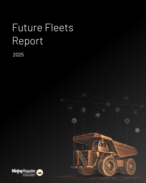The Impact of FIFO Work Practices on Mental Health parliamentary report released yesterday by the Education and Health Standing Committee follows a 10-month inquiry launched after nine reports of FIFO-linked suicides in just a year.
Despite a lack of reliable data on suicides, the report said recent studies conceded FIFO workers had a 30% incidence rate of mental distress – which was 10% higher than the general population.
This is because a typical FIFO resource worker comes from the highest risk demographic – male aged 18-44 – for mental illness and suicide and regularly deals with factors contributing to mental distress, including isolation and fatigue.
“Understandably, this can have a significant impact on his emotional health and wellbeing,” Education and Health Standing Committee chairman Dr Graham Jacobs said, adding a code of practice should provide guidance and promote improved mental and emotional health and wellbeing among the workforce.
The report recommended the code of practice should advise a two weeks on, one week off, or the 8 days on, 6 days off roster and provide guidance on how to address fatigue, workplace culture, bullying and harassment and accommodation practices; and promote better communication technologies, training in mental health literacy, suicide postvention policies, mental health evacuation procedures and active lifestyles.
The committee also made 30 recommendations to industry and government after noting confusing legislation and a lack of recognition from employers of the importance of family connections as contributing to the FIFO mental health issue.
The report drew careful responses from both the Chamber of Minerals and Energy of Western Australia and the Australian Mines and Metals Association.
While both recognised the importance of the issue and voiced the need for a collaborative approach to further improve the mental health of the FIFO community, they warned any action should be based on reliable evidence.
“Industry would urge the government when considering its response to recommendations, to focus on quality research and data, rather than on anecdotal and emotive evidence,” CME CEO Reg Howard-Smith said.
CME said the report was an opportunity to increase awareness and understanding of the complex issue of mental health and suicide prevention and said it would review it in detail.
However, it remained dubious at the need for more regulations, saying the majority of resources companies already provided counselling services and promoted awareness of wellbeing issues via their fit for work and health promotion initiatives, leading to improvements in the conditions, rosters and facilities available on site for FIFO employees in the last 10 years.
It also said the industry was already guided by many codes of practice and guidelines, including the Working Hours Code of Practice; Prevention and Management of Violence, Aggression and Bullying Code of Practice, Safe Design of Buildings and Structures Code of Practice; and General Duty of Care guidelines for both mines and petroleum.
“The resources sector puts the safety and health of employees first and foremost and supports the use of robust and peer-reviewed research to inform continuous improvement efforts and ensure evidence based policy decisions prevail,” Howard-Smith said.
“[But] at the end of the day, it’s important for us all to remember that FIFO remains a matter of choice for employees – a choice about where they live and where they choose to work.”
The AMMA said the report should be a starting point for further dialogue and engagement between government and industry stakeholders.
























